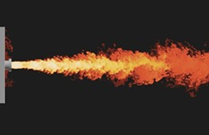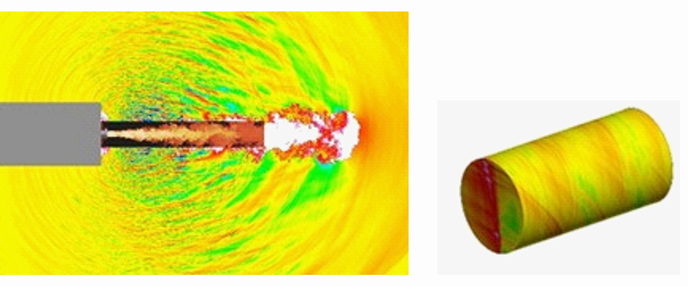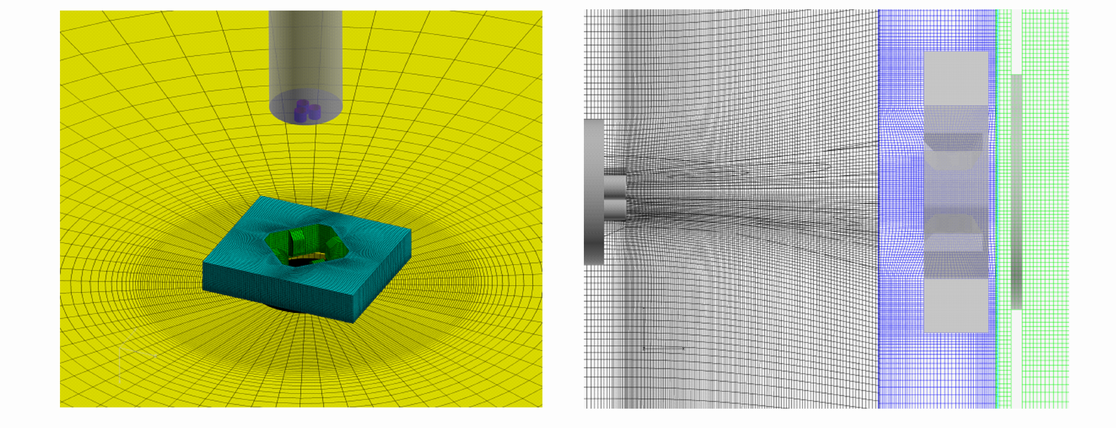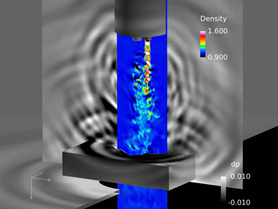Research and Development of Predicting Launch Vehicle Acoustics
JAXA Supercomputer System Annual Report April 2016-March 2017
Report Number: R16E0082
- Responsible Representative: Eiji Shima(Research Unit III Research and Development Directorate)
- Contact Information: Seiji Tsutsumi(tsutsumi.seiji@jaxa.jp)
- Members: Ryoji Takaki, Seiji Tsutsumi, Hiroyuki Ito, Taro Shimizu, Junya Aono, Takanori Haga, Yuhi Morii, Masaharu Abe, Masayuki Kakehi, Mikiroh Motoe, Manabu Hisida, Hiroshi Koizumi, Yasuhiro Kawashima, Shun Ito
- Subject Category: Space(Rocket,Space transportation)
Abstract
Prediction and reduction of the acoustic environment level caused by aeroacoustics of exhaust jet at lift-off and transonic buffet are required for the development of the next flagship launch vehicle (H3). Therefore, improve the acoustic analysis tool at the lift-off constructed up to the previous phase, and expand the range of application, predict the acoustic environment throughout the flight of the launcher / spacecraft, contribute to the design of low noise launch pad and silent launch vehicle.
Goal
We analyze the aerodynamic noise generated from the exhaust jet during rocket flight and the mechanism of generation of fluid noise due to shock wave / turbulent boundary layer interaction during transonic flight, to acquire sound level prediction technology.
Objective
We will build a technology to predict 31.5-500 Hz external acoustic environment in about one week.
References and Links
Please refer ‘JEDI Center(JAXA’s Engineering Digital Innovation Center)‘.
Use of the Supercomputer
Perform multi-billion scale LES analysis and its post processing.
Necessity of the Supercomputer
It is necessary to carry out LES analysis on the scale of billions of points, and to achieve the targeted frequency resolution it is essential to havesupercomputer.
Achievements of the Year
Result1
In the gas oxygen / gas hydrogen test conducted at JAXA Kakuda Space Center, a simple fairing model was installed, and the acoustic level inside and outside was measured. Using the results, we verified the Aero-/vibro acoustic simulation method under development at our center. CFD analyzes the hydrodynamic field as the sound source using High-Fidelity LES capable of multicomponent analysis of thermally-perfect gas (Fig.1), and CAA analysis using the full Euler equation in the time domain (Fig.2) was carried out. For the fairing model, analysis of time domain / frequency domain of structural vibration and internal sound field using NASTRAN was carried out. Then, the result of CFD / CAA was coupled with the result of vibroacoustics. It became possible to capture the peak of the spectrum caused by the structural mode due to the resonance mode of the internal space and ring mode of the fairing structure.
Result2
In the operation of JAXA’s newer H3 launch vehicle, several configurations of engine layout, including clustered main engines and multiple solid motors, are considered. In order to efficiently predict the difference on the acoustic environment between different configurations using CFD, we used an overset-grid method that can independently create and combine the rocket and the launch pad computational grids (Fig. 3). The high-order flux-reconstruction method which can be expanded to unstructured grids and does not require a stencil at the overset boundary was used. High-fidelity LES was performed to investigate the interaction of three clustered jets and the launch pad under the cold jet test conditions (Fig. 4). The frequency characteristic of the near-field sound pressure was successfully reproduced by CFD. It is expected that we can clarify the phenomena related to the difference of acoustic environment between different configurations and utilize it for sound reduction.
Publications
Peer-reviewed articles
1) S.Tsutsumi, K.Terashima, ‘Validation and Verification of Numerical Prediction Method for Lift-off Acoustics of Launch Vehicles,’ Aerospace Technology Japan, to be published
Presentations
1) Seiji Tsutsumi, Shinichi Maruyama, Wataru Sarae, Keita Terashima, Tetsuo Hiraiwa, and Tatsuya Ishii, ‘Development of aero-vibro acoustics methods for predicting acoustic environment inside payload fairing at lift-off,’ J. Acoust. Soc. Am. 140, 3096 (2016).
Computational Information
- Parallelization Methods: Hybrid Parallelization
- Process Parallelization Methods: MPI
- Thread Parallelization Methods: OpenMP
- Number of Processes: 256, 480, 800, 1600
- Number of Threads per Process: 2, 8
- Number of Nodes Used: 30, 64, 200, 400
- Elapsed Time per Case (Hours): 170, 400, 650
- Number of Cases: 2, 4
Resources Used
Total Amount of Virtual Cost(Yen): 37,963,254
Breakdown List by Resources
| System Name | Amount of Core Time(core x hours) | Virtual Cost(Yen) |
|---|---|---|
| SORA-MA | 22,093,386.59 | 35,891,936 |
| SORA-PP | 97,565.56 | 833,014 |
| SORA-LM | 24,067.76 | 541,524 |
| SORA-TPP | 0.00 | 0 |
| File System Name | Storage assigned(GiB) | Virtual Cost(Yen) |
|---|---|---|
| /home | 8,720.97 | 82,265 |
| /data | 38,040.56 | 358,837 |
| /ltmp | 7,481.69 | 70,575 |
| Archiving System Name | Storage used(TiB) | Virtual Cost(Yen) |
|---|---|---|
| J-SPACE | 59.95 | 185,100 |
Note: Virtual Cost=amount of cost, using the unit price list of JAXA Facility Utilization program(2016)
JAXA Supercomputer System Annual Report April 2016-March 2017






